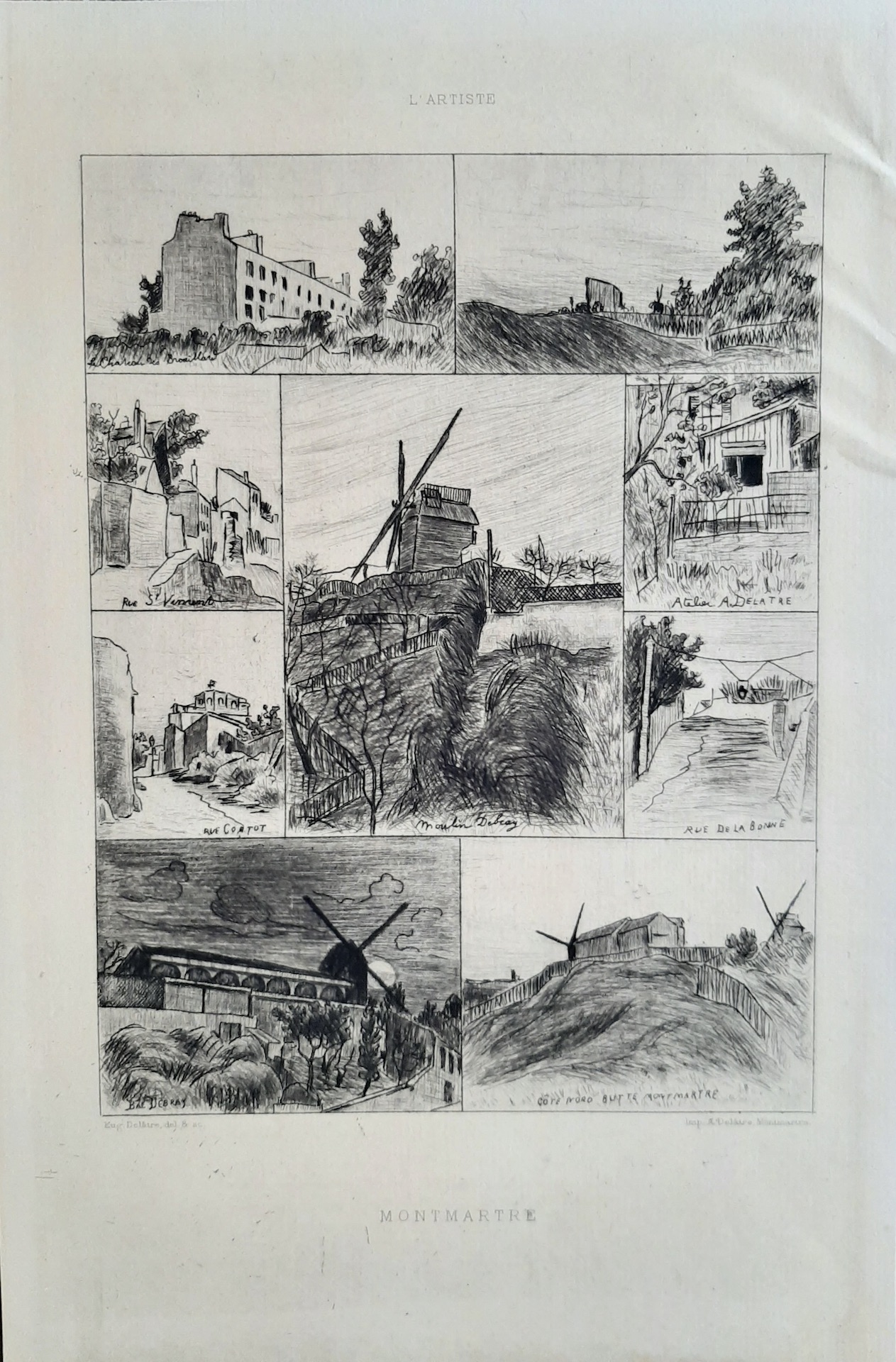Description
Eugène Delâtre (1864-1938)
Eugène Delâtre: Montmartre, 1886
Eugène Delâtre Montmartre L’Artiste – Original etching
Proof on laid paper representing 9 different small views of Montmartre: Le Chateau Des Brouillard, Rue St Vincent, Atelier A. Delatre, Rue Cortot, Moulin Debray, Rue De La Bonne, Bal Debray, Côte Nord Butte Montmartre. Engraving published by the famous magazine L’Artiste (volume 1, 1886) – Printing house Delâtre, Montmartre.
Dimensions of the sheet : H. 275 mm. L. 182 mm. Dimensions of the square line : H. 190 mm x W. 143 mm.
Condition : slight creasing of the paper in the upper right margin, traces of mounting on the back.
Eugène Delâtre was born in Paris, the son of the famous printer Auguste Delâtre (1822-1907). At the age of 7 or 8, while he was in London with his father, he already tried his hand at drypoint engraving. He took some drawing and watercolor lessons with J. L. Brown. He received advice from his father and the many artists who frequented his father’s printing shop. His work is currently estimated at about 1000 plates, in black or mostly in color. His favorite subjects are landscapes and views of Paris, particularly Montmartre. Delâtre is also credited with a few portraits, including one of his father at his press, examining a print. He is an associate of the Sté Nationale des Beaux-Arts since 1909 (exhibited at this Salon). He is a member of the Société des Peintres-Graveurs and the Société de la Gravure en Couleurs. His father, who advised him on engraving, also made him a master printer who was destined to succeed him in the management of his workshop. Delâtre printed many of the etchings and drypoints of the engravers of his time.
His color prints are particularly famous (see also: H. Beraldi, “Eugène Delâtre”, Revue de l’Art Ancien et Moderne, June 1905, and in the same journal an article by R. Bouyer, August 10, 1914, published on Oct. 10, 1919). His mark appears on many of his own engravings (usually in the lower margin), and on engravings of other artists, printed by him (usually in the bottom of the subject, in a dark part, the mark is then little visible). He also used the mark with his father’s initials (Source: Lugt L. 742)


Reviews
There are no reviews yet.